If you’re considering keeping a caged bunny as a pet, there are a few things you should know before bringing one home. This article will provide you with all the information you need to know about keeping a caged bunny. We’ll cover everything from what kind of cage to get to what kind of diet your bunny should have. We’ll also discuss some of the most common health issues that can affect caged bunnies, as well as tips for providing adequate exercise and enrichment. By the end, you’ll be well-informed and ready to provide your caged bunny with the best care possible.
Advantages of Keeping a Caged Bunny
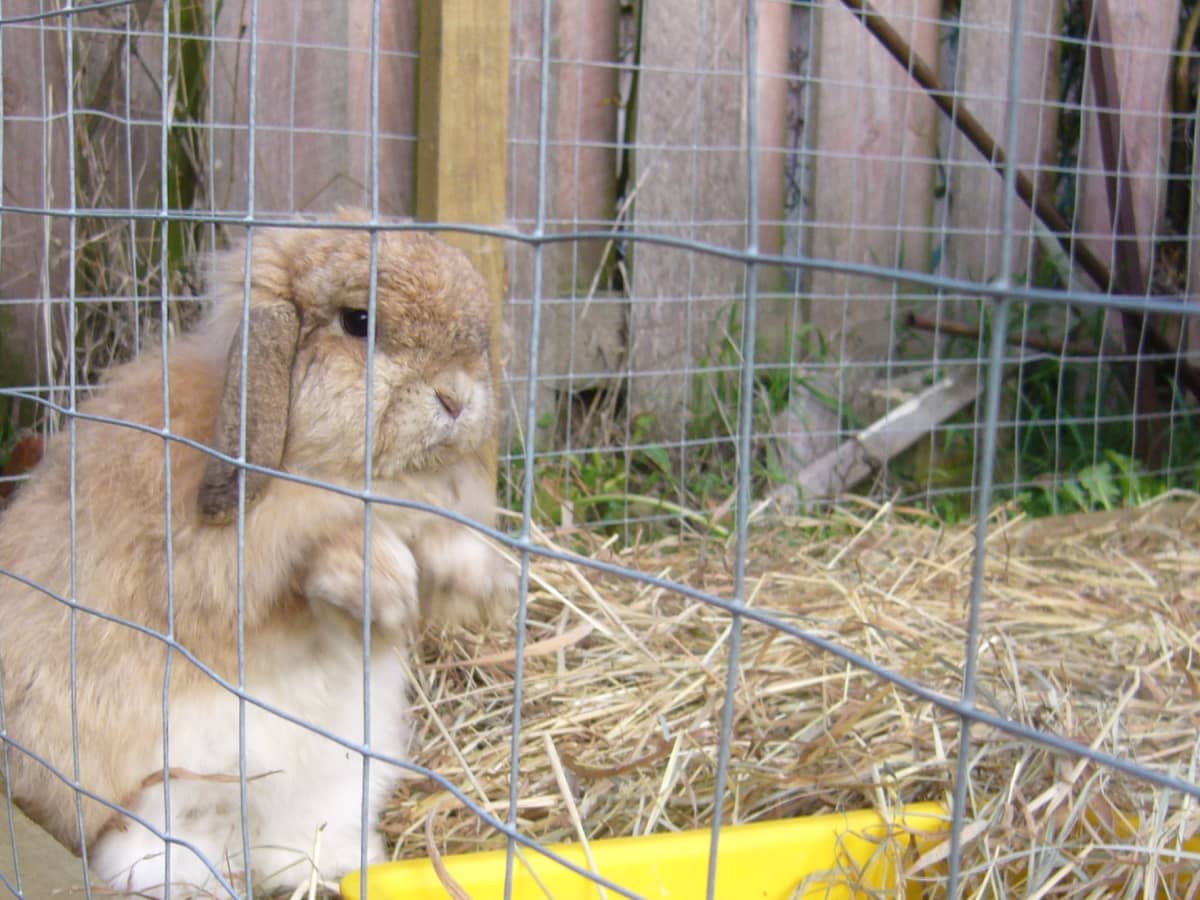
- Convenience – Keeping a caged rabbit is convenient because they take up less space than their outdoor counterparts, making them ideal for apartment living.
- Protection – Keeping your rabbit in a cage helps to protect it from predators, as well as from itself. Rabbits are known to nibble on furniture and other things, so keeping your rabbit in a cage can help protect your home from damage.
- Health and Hygiene – Keeping your caged rabbit clean and healthy is much easier than with an outdoor rabbit, as you can easily clean their cage and provide them with fresh food and water. This also protects your rabbit from diseases that can be spread by other animals.
- Bonding – Keeping your rabbit in a cage will help you bond with them, as you will get to spend more time interacting with them, such as when you are cleaning their cage or offering them treats.
- Training – With a caged rabbit, you can easily train them to do certain tasks, such as using a litter box or coming when called.
Preparing Your Home for a Caged Bunny

Cage/Hutch
Before bringing your caged bunny home, you need to ensure that you have a suitable cage or hutch to house them in. The cage should be made of wire mesh, preferably with a solid floor, and should be large enough for your bunny to move around and stretch out in. It should also be secure and escape-proof, as rabbits can be very resourceful in finding their way out of a cage.
Bedding
Once you’ve chosen a cage for your rabbit, you need to provide them with comfortable bedding. Hay is the best option for bedding, as it is absorbent and provides the perfect surface for your rabbit to burrow into. You can also use shredded paper, straw, or wood shavings, but make sure that the bedding is changed regularly to keep your rabbit’s cage clean and hygienic.
Food
A healthy diet is essential for keeping your rabbit in a cage happy and healthy. Your rabbit should have access to fresh hay and water at all times, and should be fed a balanced diet of fresh vegetables, hay, and a small amount of pellets. Avoid giving your rabbit too much fruit or sugary treats, as these can cause digestive problems.
Rabbit Care Basics
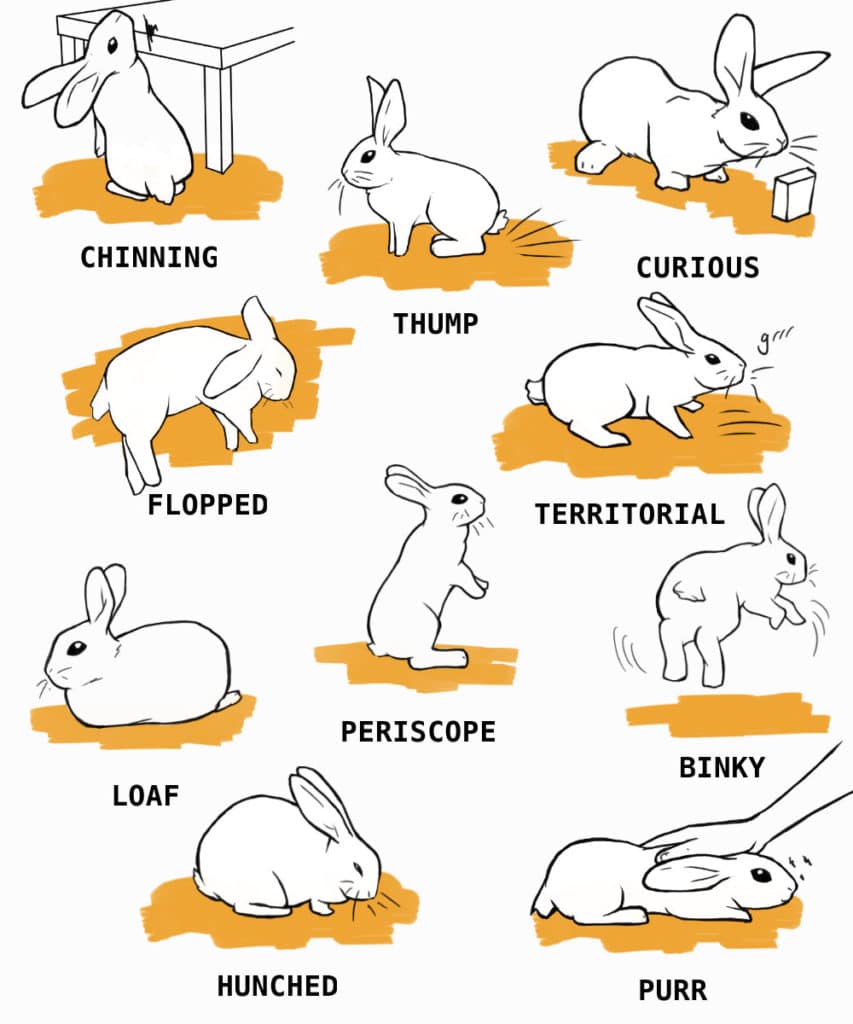
Diet
A proper diet is essential for the health and wellbeing of your caged rabbit. Feeding your rabbit a balanced diet of hay, fresh vegetables and a small amount of pellets is the best way to ensure they get the proper nutrition. Hay should be the primary food source for your rabbit and should be available at all times. Fresh vegetables should be introduced gradually and in small amounts to ensure that your rabbit can digest them properly. A small amount of pellets can be added to the diet, but should not exceed 10-15% of the total diet.
Exercise
Exercise is important for the health of your caged rabbit. Providing your rabbit with an area to roam and explore can help keep them fit and active. You can also provide toys and activities to encourage your rabbit to get moving. Regular handling and playtime can also help keep your rabbit active and healthy.
Grooming
Grooming is important for rabbits in cages as they are unable to groom themselves as they would in the wild. Brushing your rabbit regularly can help keep their fur clean and free of tangles. Additionally, taking care to clean your rabbit’s cage regularly will help keep your rabbit healthy and happy.
Health
Health is an important factor to consider when keeping a rabbit in a cage. Regular vet visits can help ensure that your rabbit is healthy and is up to date on vaccinations. Your vet can also help you identify signs of illness and can provide treatment as needed. Additionally, providing a clean and comfortable environment for your rabbit is essential for their overall health and wellbeing.
In conclusion, by following these basic guidelines, you can ensure that your caged rabbit is getting the proper care and nutrition it needs. With proper diet, exercise, grooming and health care, your rabbit in cage can live a long and healthy life.
Handling and Bonding with Your Caged Bunny
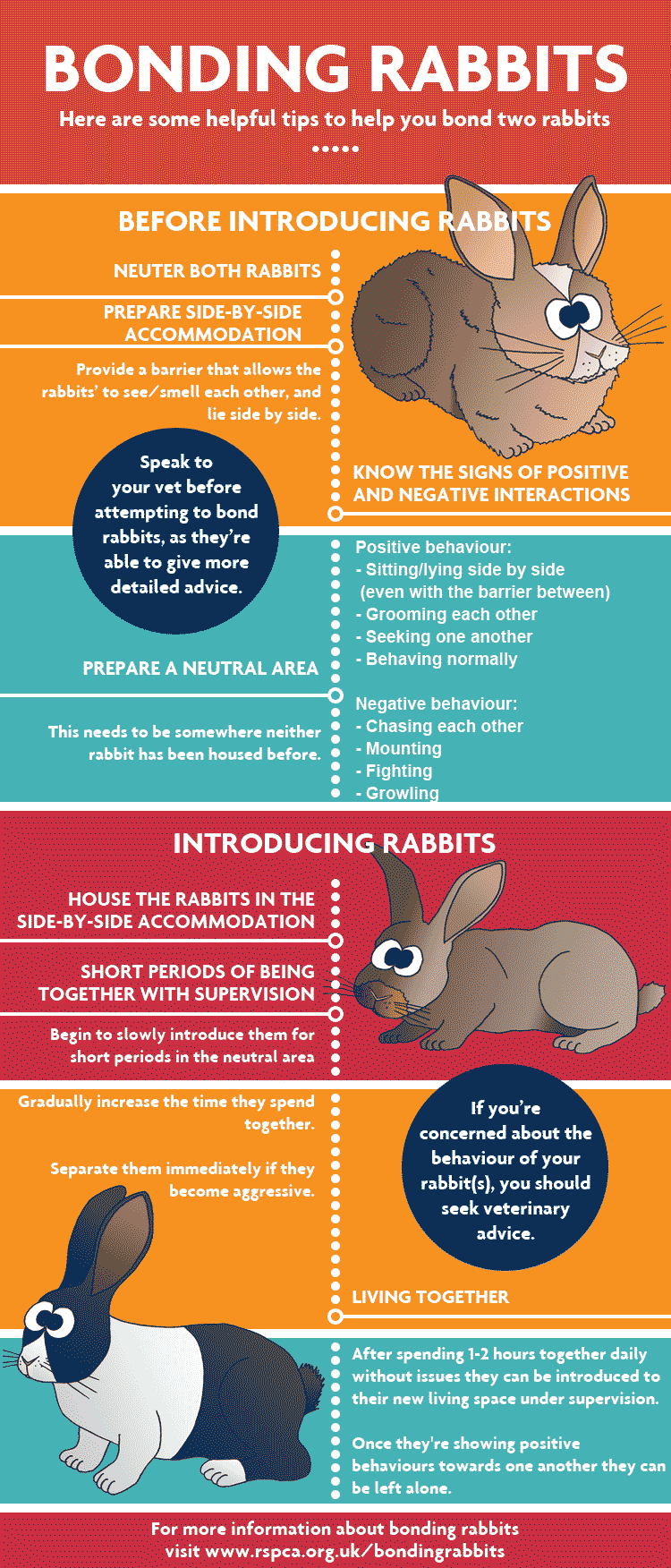
- Be gentle and patient: When handling your bunny, be gentle and use slow movements to prevent startle reactions. Give your bunny some time to get used to you before picking them up.
- Let your bunny get to know you: Before handling your bunny, let them sniff you and get used to your presence. Spend time near your bunny, sitting quietly, talking softly, and slowly introducing them to handling.
- Pick them up correctly: When you are ready to pick your bunny up, place one hand under their chest, and the other behind their bum. Support their hind legs with your hand, and their front legs with your arm.
- Bonding through play: Bonding with your bunny can be done through play. Be sure to use interactive toys, such as plastic tunnels, balls, and chew toys. You can also use brushes and combs to groom your bunny.
- Make it a positive experience: Always make sure your bunny has positive experiences while being handled. Offer them treats and praise, and be sure to stay calm and quiet.
Rabbit-Proofing Your Home
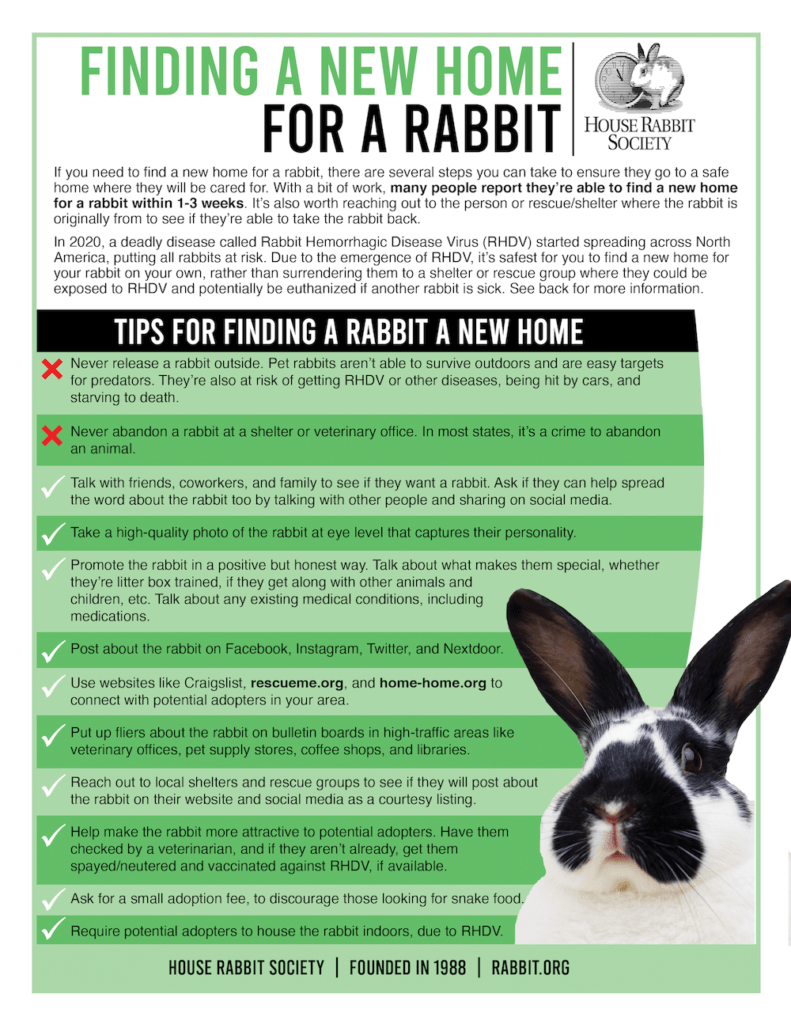
When keeping a caged bunny, it is important to remember that rabbits can be quite destructive if given the opportunity. As such, it is important to rabbit-proof your home to ensure that your pet has a safe and secure environment to live in.
Start by Creating a Safe Space
The first step in rabbit-proofing is to create a safe space for your rabbit. This should be a space that they can access easily and that is free from hazards and distractions. Consider investing in a sturdy cage or hutch, as this will give your rabbit somewhere safe to sleep and rest.
Cover Electrical Cords
Rabbits are notorious for chewing on electrical cords, so it is important to ensure that all cords in the home are covered or tucked away. You can purchase cord covers from most home improvement stores, which are designed to protect your wires from being chewed on.
Secure Loose Wires and Cables
In addition to covering cords, you should also secure any loose wires or cables in the home. This will help to prevent your rabbit from getting tangled up and injured.
Remove Hazardous Items
When rabbit-proofing your home, it is important to remove any items that could be hazardous to your pet. This includes items such as cleaning chemicals, sharp objects, and any small items that your rabbit could swallow.
Keep Food Out of Reach
Bunnies love to eat, so it is important to keep any food items out of reach. This includes food items such as fruits, vegetables, and grains. It is also important to make sure that any food items that your rabbit is able to access are stored in a secure container.
Limit Access to Unsafe Areas
Finally, it is important to limit your rabbit’s access to any areas in the home that could be unsafe. This includes areas such as the kitchen and bathroom, as these spaces can contain a variety of hazardous items.
Rabbit-proofing your home is an essential part of keeping a caged bunny. By following the tips outlined above, you can help ensure that your pet has a safe and secure environment to live in.
Socializing Your Caged Bunny
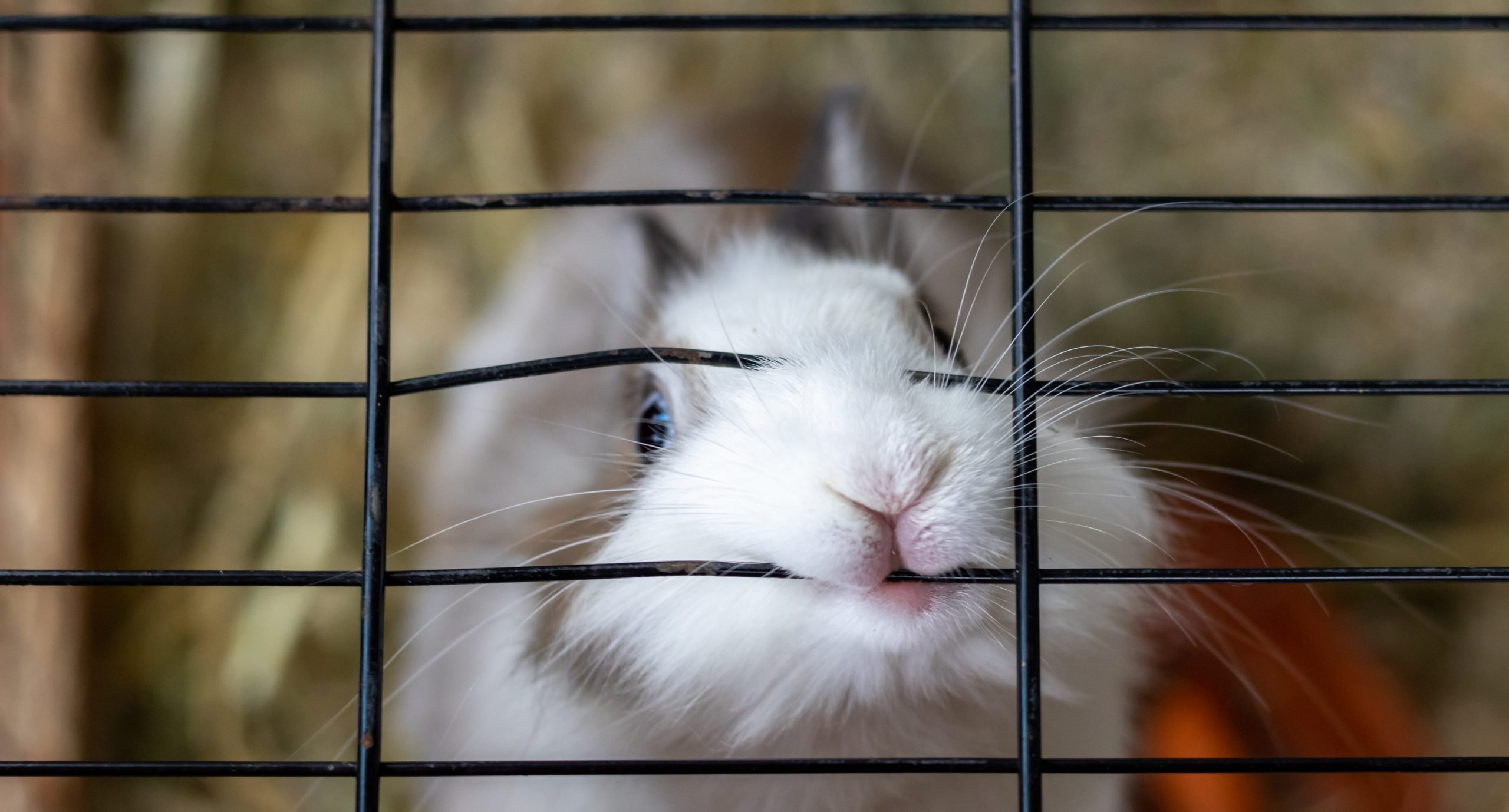
| Activity | Description |
|---|---|
| Handling | Gently handling your bunny and providing regular tactile stimulation will help your bunny become more comfortable with people. |
| Positive Reinforcement | Reward your bunny with treats and positive reinforcement for good behavior. |
| Playtime | Interactive playtime (with the help of toys or your hands) can help your bunny feel more at ease and relaxed. |
| Socialization with Other Animals | If you have other small pets in your home, let them spend some supervised time together. |
It is important to socialize your caged bunny as it will help it become more comfortable and relaxed around people and other animals. To do this, you can try the following activities:
- Handling: Gently handling your bunny and providing regular tactile stimulation will help your bunny become more comfortable with people.
- Positive reinforcement: Reward your bunny with treats and positive reinforcement for good behavior.
- Playtime: Interactive playtime (with the help of toys or your hands) can help your bunny feel more at ease and relaxed.
- Socialization with other animals: If you have other small pets in your home, let them spend some supervised time together.
Socialization is key to keeping a happy, healthy caged bunny. The more comfortable and relaxed your bunny is, the more likely it is to stay healthy and active.
Troubleshooting Tips for Caged Rabbits
Check the Cage Regularly: Make sure the cage is clean and in good condition, to prevent any health issues. Check for any signs of damage or chewing.
Watch for Signs of Stress: Monitor your rabbit for any signs of stress, such as excessive grooming, hiding, or changes in eating habits. If you notice any of these behaviors, adjust the environment to make it more comfortable for your rabbit.
Provide Proper Nutrition: Provide your bunny with a balanced diet of hay, fresh vegetables, and a small amount of pellets. Ensure that fresh water is always available.
Keep the Cage Clean: Clean your rabbit’s cage regularly and replace soiled bedding. Doing so will help reduce the risk of disease or infection.
Provide Mental Stimulation: Provide your rabbit with plenty of toys and activities to keep them entertained. This will help to prevent boredom and keep them mentally healthy.
Watch for Signs of Illness: Monitor your rabbit for any signs of illness, such as sneezing, coughing, runny eyes, or diarrhea. If you notice any of these signs, take your rabbit to the vet immediately.
Be Patient: Remember that rabbits can take some time to adjust to their new environment. Give your rabbit plenty of time to get used to the cage and its surroundings.
Frequently Asked Questions
What type of cage is best for a caged bunny?
A cage should be large enough for the rabbit to move around and stand up on its hind legs. It should also be tall enough that they can stretch out while standing. The cage should also have multiple levels with stairs or ramps, so they can move between levels and get exercise. The cage should also have plenty of space for toys and activities. Additionally, the cage should be easy to clean and provide plenty of ventilation. Choose a cage made from sturdy materials such as metal or plastic, and make sure it has a secure latch to prevent escape.
What Type of Diet Should I Feed My Caged Bunny?
Bunnies require a diet of hay and fresh vegetables. Hay should make up the majority of the diet, and fresh vegetables should make up the remainder. For optimal health, give your bunny unlimited access to hay, and provide fresh vegetables twice a day. Avoid giving your bunny processed food, and never feed them treats with added sugar. Additionally, provide fresh, clean water at all times.
How Often Should I Clean My Caged Bunny’s Cage?
Weekly:
- Check the cage for soiled areas.
- Remove droppings, food debris, and fur.
- Clean water bottles and food bowls.
- Replace bedding, if necessary.
Monthly:
- Disinfect the entire cage with a solution of water and vinegar.
- Clean any toys, ramps, and ladders.
- Wash all bedding with hot water.
How often should I interact with my caged bunny?
Daily:
- Provide fresh hay, water and food.
- Clean the cage and litterbox.
- Provide treats and toys for enrichment.
- Groom the rabbit.
- Spend time playing with the rabbit outside of the cage.
- Bond with the rabbit through gentle handling and petting.
Weekly:
- Provide fresh hay, water and food.
- Clean the cage and litterbox.
- Provide treats and toys for enrichment.
- Groom the rabbit.
- Spend time playing with the rabbit outside of the cage.
- Bond with the rabbit through gentle handling and petting.
- Check the rabbit’s nails and trim if needed.
- Check the rabbit’s fur and groom if necessary.
Monthly:
- Provide fresh hay, water and food.
- Clean the cage and litterbox.
- Provide treats and toys for enrichment.
- Groom the rabbit.
- Spend time playing with the rabbit outside of the cage.
- Bond with the rabbit through gentle handling and petting.
- Check the rabbit’s nails and trim if needed.
- Check the rabbit’s fur and groom if necessary.
- Check the rabbit’s teeth and have them professionally cleaned if necessary.
- Check the rabbit’s eyes, ears and nose for any signs of infection or disease.
What Type of Bedding Should I Use for My Caged Bunny?
A clean, comfortable, and safe bedding is essential for your caged bunny. Depending on the type of cage you have, the material you choose for bedding can make all the difference. Here are some options to consider:
- Straw: Straw can provide a soft, warm, and comfortable place for your bunny to rest. It also helps absorb odors and moisture. However, straw has a tendency to be dusty and can cause respiratory issues in bunnies.
- Wood Pellets: Wood pellets are a great option for bedding. They are dust-free and absorb moisture well, which helps keep your cage clean and odor-free. They also provide insulation, which helps keep your bunny warm.
- Paper-Based Beddings: Paper-based beddings are made from recycled paper and are dust-free. They also absorb moisture well and are very easy to clean. However, they do not provide much insulation and can be more expensive than other bedding options.
- Cotton Bedding: Cotton bedding is soft and comfortable, and provides excellent insulation. It is also dust-free, but can be more expensive than other bedding options.
- Fleece Bedding: Fleece bedding is a great option for bunnies, as it is soft and comfortable and provides excellent insulation. It is also dust-free and absorbent. However, it can be more difficult to clean and can be more expensive than other bedding options.
No matter which bedding you choose, it is important to make sure it is always clean and free of debris, as unclean bedding can cause health problems for your bunny.
Conclusion
Bunnies make great companions, but it is important to know the basics of rabbit care before bringing one home. From cages to diet to exercise, there are many things to think about when caring for a pet bunny. With the right supplies and knowledge, keeping a caged bunny can be a rewarding and enjoyable experience.
